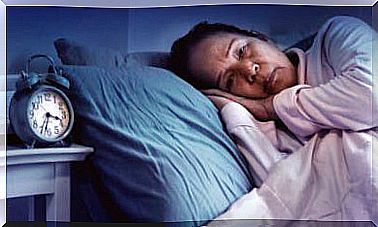How To Identify An Addiction To Running

Running is positive because it improves circulation, cerebral oxygenation and helps maintain an adequate body mass index. However, making it obsessive is detrimental to your health. In this article we will see what addiction to running is all about.
Any activity can be a problem for people, even those who were originally meant to improve the quality of life. Nothing done in excess is healthy. In life we must maintain a balance.
What is addiction to running?
Although it is a physical activity aimed at improving aesthetics and overall health, excessive running can be a serious problem for some people. In fact, addiction to running is defined as a behavioral addiction.
People who start the habit of playing a sport do so to improve their quality of life. However, they may end up generating a pathological dependence on the activity.
When it comes to addiction to running, the problem is that the person completely loses the goal of running. They no longer do it for the health benefits of exercise, but only seek to satisfy an irrational craving that provides instant pleasure.
Social influence represents one of the most important risk factors for the acquisition of behavioral abuse. For example, a person who is dissatisfied with their physical appearance is influenced by beauty stereotypes, which they will aggressively achieve.

How can you identify it?
As with other types of addiction, the main indicator for recognizing addiction to running is the frequency with which someone performs the activity. In cases where running takes place daily, as a kind of ritual, the prevalence indicator is met.
Of course, it will also be necessary to recognize the importance people attach to it. For example, someone who cannot miss a training day without feeling stress, will meet the irrational behavior indicator.
Similarly, the intensity of the behavior is another sign of whether running is becoming a problem. Intense cases occur when a person cannot stop, even if they experience some kind of discomfort. An example of this could be running without recovering from an injury.
Overtraining is not the same as dependence on running. In the case of the person who overtrains, it may be due to anxiety about a certain competition. What happens with addiction to running is that it does not correspond with the pursuit of a goal, but with the need to maintain the behavior constantly and irrationally.
What signs of running addiction should one look for?
The indicators of dependence are usually present in fairly clear symptomatology. Given that in this case it is a behavior, let’s see what are the most obvious signs:
- Obsession : The person immerses themselves in their running routine to the point that they can not avoid doing it daily.
- Running has negative consequences in the important areas of life : work, studies, family.
- Inability to maintain control.
- Denial : It is difficult for an addict to accept that they are presenting a problem because of the addictive behavior.
What are the physical and social consequences?
We can categorize the negative consequences of addiction to running in two aspects:
- Physical : From muscle damage to extreme body mass loss.
- Social : Neglect of important relationships with family and friends.
In some cases, people distance themselves from their immediate social circle trying to talk to them about their addiction. The physical and social consequences that people with addictions have always affect their family and friends.
How to overcome addiction to running
Overcoming a behavioral addiction requires accepting that you have a problem. From that moment, people can begin the process of detoxifying their behavior. In this way, they must acquire new habits that will gradually take root.
Psychological treatment may be necessary in cases of running addiction. Cognitive behavioral therapy is the most common type of treatment in such cases, as it works quite well to restructure the mental forms that maintain the addiction.
The support of family and friends can make the difference between success and failure in the process of overcoming addiction. When the loved ones can understand that their loved one is dealing with an addiction, it is best to avoid being judgmental about their situation.
The best way to provide support is to do so with understanding, so that the affected person feels understood and supported. However, the problem should not be downgraded. Phrases like “you just have to stop, you can do it” or “it can not be that hard to stop running” are counterproductive.

Recommendations to prevent addiction to running
Some ideas for preventing addiction to running start from self-perception – that is, a person has a healthy self-concept. This principle is based on the fact that good self-esteem promotes healthy self-care habits.
Finally, it is important to be careful about the way we structure our routines. For example, it is not wise to be strict when developing an exercise plan. The best thing to do is to have rest days when we can do other things that are also beneficial.









